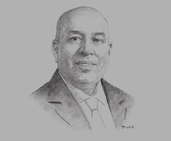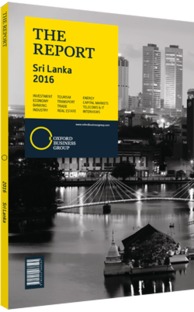Mohan Pandithage, Chairman and Chief Executive, Hayleys: Interview

Interview: Mohan Pandithage
What factors have contributed to the declining contribution of exports to GDP?
MOHAN PANDITHAGE: Sri Lanka’s exports have been characterised by two important features in the last couple of decades: limited diversification of products and limited diversification of markets. Around 60% of Sri Lanka’s exports are concentrated in the EU and US markets, while two products – apparel and tea – account for 60% of annual export value. The failure of the country to further diversify export products, particularly towards technology and value addition, and the failure to penetrate new emerging markets, are key factors limiting export growth.
Countries in the ASEAN region have thrived by linking into global value chains for export manufacturing. Sri Lanka has not been able to do so as yet, and should leverage its logistical advantages to tap into global value chains in manufacturing and services. While foreign direct investment has the potential to play an important role in terms of technological value addition and facilitating access to markets, local export firms need to invest in research and development to cater to higher value export markets.
Much work needs to be done to invest in untapped emerging and frontier markets. Developing links with the appropriate distribution partners and fine-tuning product development to cater to these markets requires investments of time and money. There is also a role for the government and business chambers here as facilitators for developing links with partners for Sri Lankan exporters in target emerging markets.
What are the greatest labour challenges you face as a manufacturer and exporter?
PANDITHAGE: The changing demographics are a big challenge, creating pressures in the labour market across industries. For example, this is demonstrated quite clearly in the plantation industry. The younger generation of workers is reluctant to work in the estates and prefers urban jobs in the service sector. Shortages of labour are seen in several industries and this translates into rising labour costs. This necessitates a shift into higher-value products and services, which are less susceptible to labour cost competition and can compete in the global market. The challenge here is again a shortage of skilled labour in certain industries. Investment in education and training becomes a crucial aspect in further enhancing Sri Lanka’s competitive advantages.
How can Sri Lanka best position itself against the likes of Singapore as a transport hub?
PANDITHAGE: Sri Lanka has a strategic location, with just eight nautical miles between Hambantota and the main east-west route. With Colombo International Container Terminal and ongoing work on the East Terminal, we have the region’s largest deep-draught port, which should help make Port of Colombo the point of access for the Indian subcontinent. Yet productivity at the government-owned terminal is not on par with the two private operators. This must be improved if the port is to become a hub, which means easing restrictions on berthing facilities and draught; moving from the two-ship system to a three-ship one; and having the same working hours as the private terminals. It is about efficiency.
The government is going to call for tenders for tanks so that bunkering prices come down, which will help reduce the cost per container. When a ship owner is checking on freight for a box going in to or coming out of Colombo, they check port charges. We must also give discounts on volume.
We must have competitive rates to get into the same league as Singapore. The free zones in Katunayake and Mirijjawila should also encourage multinationals to use Sri Lanka to store, transfer and add value free of taxation. This would capitalise on the existing Indo-Sri Lanka Free Trade Agreement.
You have reached the limit of premium articles you can view for free.
Choose from the options below to purchase print or digital editions of our Reports. You can also purchase a website subscription giving you unlimited access to all of our Reports online for 12 months.
If you have already purchased this Report or have a website subscription, please login to continue.

